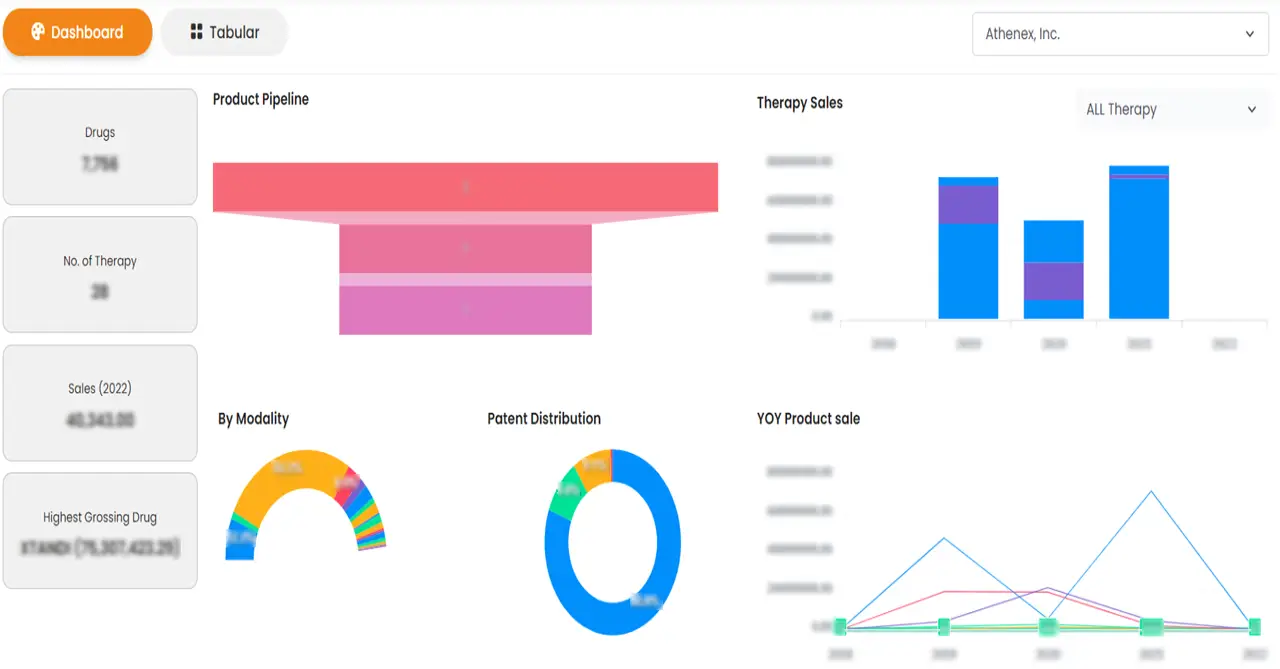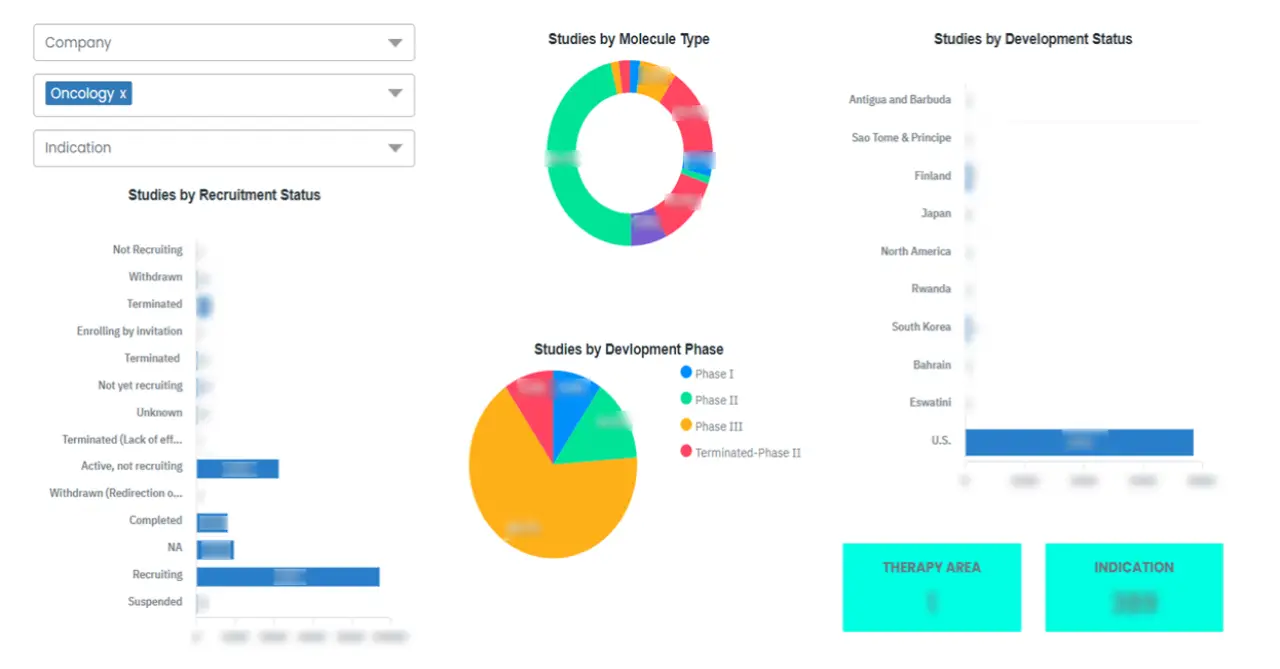Global Sustained Release Drugs Market
Tamanho do mercado em biliões de dólares
CAGR :
% 
 USD
13.29 Billion
USD
24.72 Billion
2024
2032
USD
13.29 Billion
USD
24.72 Billion
2024
2032
| 2025 –2032 | |
| USD 13.29 Billion | |
| USD 24.72 Billion | |
|
|
|
>Global Sustained Release Drugs Market Segmentation, By Route of Administration (Oral, Intramuscular, Subcutaneous, Transdermal, Intravenous, and Others), Mode (Over-the-Counter and Prescription), Distribution Channel (Hospital Pharmacies and Online Pharmacies) – Industry Trends and Forecast to 2032
Sustained Release Drugs Market Analysis
The sustained release drugs market has seen notable advancements in both technology and methods. One of the key innovations is the development of polymer-based drug delivery systems, such as microspheres and nanoparticles, which offer more controlled and precise drug release over an extended period. These advancements allow for reduced side effects and enhanced therapeutic efficacy, especially in chronic diseases such as diabetes, cancer, and cardiovascular conditions. 3D printing technology is also gaining traction, enabling customized drug formulations tailored to individual patient needs.
In addition, smart polymers that respond to environmental changes (such as pH or temperature) are being increasingly utilized. These materials can help in releasing the drug at targeted locations in the body, improving drug bioavailability and minimizing wastage.
The growth in personalized medicine is also accelerating the market. Sustained release formulations can be tailored for specific patient needs, ensuring more effective treatment outcomes. As a result, the sustained release drugs market is projected to expand rapidly, driven by these technological innovations and the growing demand for more efficient and patient-centric therapies.
Sustained Release Drugs Market Size
The global sustained release drugs market size was valued at USD 13.29 billion in 2024 and is projected to reach USD 24.72 billion by 2032, with a CAGR of 8.06% during the forecast period of 2025 to 2032. In addition to the insights on market scenarios such as market value, growth rate, segmentation, geographical coverage, and major players, the market reports curated by the Data Bridge Market Research also include depth expert analysis, patient epidemiology, pipeline analysis, pricing analysis, and regulatory framework.
Sustained Release Drugs Market Trends
“Advancements in Nanotechnology for Sustained Release Drugs”
A significant trend in the sustained release drugs market is the integration of nanotechnology. This innovation enhances drug delivery by improving the bioavailability and stability of medications over extended periods. Nanocarriers, such as liposomes, nanoparticles, and nanocapsules, are being employed to encapsulate drugs, ensuring they are released gradually in the body. For instance, the development of nanotechnology-based formulations for cancer therapies is gaining traction, such as the use of liposomal formulations in chemotherapy drugs such as Doxil. This technology allows for controlled release, minimizing side effects, and improving the therapeutic efficacy. The demand for more precise drug delivery systems, especially in chronic disease management, continues to drive the market’s growth.
Report Scope and Sustained Release Drugs Market Segmentation
|
Attributes |
Sustained Release Drugs Key Market Insights |
|
Segments Covered |
|
|
Countries Covered |
U.S., Canada and Mexico in North America, Germany, France, U.K., Netherlands, Switzerland, Belgium, Russia, Italy, Spain, Turkey, Rest of Europe in Europe, China, Japan, India, South Korea, Singapore, Malaysia, Australia, Thailand, Indonesia, Philippines, Rest of Asia-Pacific (APAC) in the Asia-Pacific (APAC), Saudi Arabia, U.A.E, South Africa, Egypt, Israel, Rest of Middle East and Africa (MEA) as a part of Middle East and Africa (MEA), Brazil, Argentina and Rest of South America as part of South America |
|
Key Market Players |
Alkermes (Ireland), Johnson & Johnson Services, Inc. (U.S.), Pfizer Inc. (U.S.), Dr. Reddy’s Laboratories Ltd. (India), Boston Scientific Corporation (U.S.), Baxter (U.S.), Abbott (U.S.), GSK plc (U.K.), Novartis AG (Switzerland), Sanofi (France), F. Hoffmann-La Roche Ltd (Switzerland), Merck & Co., Inc. (U.S.), AstraZeneca (U.K.), Ipsen Pharma (France), Endo International plc (Ireland), Eli Lilly and Company (U.S.), and Lonza (Switzerland) |
|
Market Opportunities |
|
|
Value Added Data Infosets |
In addition to the insights on market scenarios such as market value, growth rate, segmentation, geographical coverage, and major players, the market reports curated by the Data Bridge Market Research also include depth expert analysis, patient epidemiology, pipeline analysis, pricing analysis, and regulatory framework. |
Sustained Release Drugs Market Definition
Sustained release drugs are medications designed to release their active ingredients gradually over an extended period, providing prolonged therapeutic effects. Different from immediate-release formulations, which release the drug all at once, sustained release drugs maintain stable drug concentrations in the bloodstream, minimizing peaks and troughs. This results in less frequent dosing, improved patient compliance, and more consistent therapeutic outcomes. These drugs are often used for chronic conditions, such as hypertension, pain management, or depression, and can be in various forms such as tablets, capsules, or injectables. The controlled release is achieved through specialized formulations or delivery systems.
Sustained Release Drugs Market Dynamics
Drivers
- Rising Demand for Personalized Medicine
The growing emphasis on personalized medicine is a significant driver for the sustained release drugs market. Personalized medicine tailors treatment plans to individual patients based on their genetic, environmental, and lifestyle factors. Sustained release formulations play a vital role in this, as they can be customized to release medication at specific rates based on the patient’s unique pharmacokinetic profile. For instance, in the treatment of cancer, drugs such as the sustained-release formulation of paclitaxel are designed to provide steady therapeutic levels, reducing side effects and enhancing efficacy. This approach ensures optimal drug concentration, improving patient outcomes and fostering a shift toward more personalized treatment strategies.
- Increased Demand for Controlled Release
The growing demand for controlled release formulations is a significant driver of the sustained release drugs market. These formulations provide a steady, controlled release of medication over time, minimizing peak and trough levels that can lead to adverse effects. By maintaining consistent drug concentrations in the bloodstream, controlled release drugs offer stable therapeutic effects, improving patient outcomes. For instance, medications such as the extended-release version of hydrocodone (Hysingla ER) help manage pain with reduced dosing frequency, leading to better patient adherence. This trend is increasingly popular among patients with chronic conditions such as diabetes and hypertension, where consistent drug levels are crucial for long-term disease management.
Opportunities
- Growing Aging Population
The growing aging population presents a significant opportunity for the sustained release drugs market. Elderly individuals often suffer from multiple chronic conditions such as hypertension, diabetes, and arthritis, which require long-term treatment. Sustained release formulations offer a practical solution by reducing the need for frequent dosing, ensuring consistent drug levels, and improving patient compliance. For instance, sustained-release formulations of antihypertensive drugs such as Losartan help manage blood pressure over 24 hours, reducing the risk of side effects and hospitalization. This trend not only boosts market demand but also drives innovation in drug delivery systems tailored to meet the healthcare needs of an aging demographic.
- Improved Drug Efficacy
Sustained release formulations offer a significant opportunity in the pharmaceutical market by maintaining consistent drug levels in the bloodstream, which improves therapeutic efficacy. Different from immediate-release formulations, which often cause drug peaks and troughs, sustained release drugs ensure steady absorption, reducing the likelihood of side effects. For instance, in the treatment of chronic pain, sustained release opioids such as OxyContin provide prolonged relief, reducing the need for frequent dosing and minimizing withdrawal symptoms. This steady sustained release drug delivery not only enhances patient compliance but also ensures better long-term disease management. As a result, pharmaceutical companies are investing in sustained release technologies to meet growing demand for more effective and safer treatments across various therapeutic areas.
Restraints/Challenges
- Complex Formulation and Manufacturing
The complex formulation and manufacturing process of sustained release drugs present significant challenges. These formulations require advanced technologies to control drug release kinetics precisely, which adds complexity to the production process. The need for specialized equipment and expertise further increases the cost of manufacturing, making sustained release drugs more expensive than traditional formulations. In addition, ensuring consistent drug release over extended periods necessitates rigorous testing and validation, prolonging development timelines. These factors create barriers to widespread adoption, as pharmaceutical companies may face financial constraints and regulatory challenges. As a result, the high cost and complexity limit the growth potential of the sustained release drugs market.
- Patient Non-compliance
Patient non-compliance is a significant restraint in the sustained release drugs market. Despite these drugs being designed to reduce dosing frequency, they may not always achieve the desired therapeutic benefits due to issues such as difficulty swallowing pills or capsules, particularly among elderly patients or those with certain medical conditions. In addition, side effects such as gastrointestinal discomfort or other adverse reactions can lead patients to discontinue or skip doses, ultimately reducing the effectiveness of the drug. This non-compliance diminishes the overall success of sustained release therapies, which, in turn, hinders their market adoption and growth, as patient adherence remains a key challenge in their widespread use.
This market report provides details of new recent developments, trade regulations, import-export analysis, production analysis, value chain optimization, market share, impact of domestic and localized market players, analyses opportunities in terms of emerging revenue pockets, changes in market regulations, strategic market growth analysis, market size, category market growths, application niches and dominance, product approvals, product launches, geographic expansions, technological innovations in the market. To gain more info on the market contact Data Bridge Market Research for an Analyst Brief, our team will help you take an informed market decision to achieve market growth.
Sustained Release Drugs Market Scope
The market is segmented on the basis of route of administration, mode and distribution channel. The growth amongst these segments will help you analyze meagre growth segments in the industries and provide the users with a valuable market overview and market insights to help them make strategic decisions for identifying core market applications.
Route of Administration
- Oral
- Intramuscular
- Subcutaneous
- Transdermal
- Intravenous
- Others
Mode
- Over-the-Counter
- Prescription
Distribution Channel
- Hospital Pharmacies
- Online Pharmacies
Sustained Release Drugs Market Regional Analysis
The market is analysed and market size insights and trends are provided by country, route of administration, mode and distribution channel as referenced above.
The countries covered in the market report are U.S., Canada, Mexico in North America, Germany, Sweden, Poland, Denmark, Italy, U.K., France, Spain, Netherland, Belgium, Switzerland, Turkey, Russia, Rest of Europe in Europe, Japan, China, India, South Korea, New Zealand, Vietnam, Australia, Singapore, Malaysia, Thailand, Indonesia, Philippines, Rest of Asia-Pacific (APAC) in Asia-Pacific (APAC), Brazil, Argentina, Rest of South America as a part of South America, U.A.E, Saudi Arabia, Oman, Qatar, Kuwait, South Africa, Rest of Middle East and Africa (MEA) as a part of Middle East and Africa (MEA)
North America is expected to dominate the sustained release drugs market due to continuous investment in research and development, along with the availability of highly sophisticated technologies. This region’s robust healthcare infrastructure and high demand for advanced pharmaceutical solutions contribute to its leadership.
Asia-Pacific region is expected to expand at a significant growth rate in the sustained release drugs market during the forecast period, driven by rapid advancements in healthcare infrastructure and consistent investments by companies in lower and middle-income countries, boosting drug accessibility and innovation.
The country section of the report also provides individual market impacting factors and changes in regulation in the market domestically that impacts the current and future trends of the market. Data points such as down-stream and upstream value chain analysis, technical trends and porter's five forces analysis, case studies are some of the pointers used to forecast the market scenario for individual countries. Also, the presence and availability of global brands and their challenges faced due to large or scarce competition from local and domestic brands, impact of domestic tariffs and trade routes are considered while providing forecast analysis of the country data.
Sustained Release Drugs Market Share
The market competitive landscape provides details by competitor. Details included are company overview, company financials, revenue generated, market potential, investment in research and development, new market initiatives, global presence, production sites and facilities, production capacities, company strengths and weaknesses, product launch, product width and breadth, application dominance. The above data points provided are only related to the companies' focus related to market.
Sustained Release Drugs Market Leaders Operating in the Market Are:
- Alkermes (Ireland)
- Johnson & Johnson Services, Inc. (U.S.)
- Pfizer Inc. (U.S.)
- Dr. Reddy’s Laboratories Ltd. (India)
- Boston Scientific Corporation (U.S.)
- Baxter (U.S.)
- Abbott (U.S.)
- GSK plc (U.K.)
- Novartis AG (Switzerland)
- Sanofi (France)
- F. Hoffmann-La Roche Ltd (Switzerland)
- Merck & Co., Inc. (U.S.)
- AstraZeneca (U.K.)
- Ipsen Pharma (France)
- Endo International plc (Ireland)
- Eli Lilly and Company (U.S.)
- Lonza (Switzerland)
Latest Developments in Sustained Release Drugs Market
- In June 2023, Croda, Inc. announced the initiation of constructing a new manufacturing facility in Pennsylvania, U.S. This strategic investment is aimed at enhancing their production capabilities, ensuring they can effectively meet the evolving demands of the industry. The new facility is expected to strengthen Croda’s position in the market by increasing its manufacturing capacity and improving operational efficiency in response to consumer and industry needs
- In September 2022, Nutriventia, a global player in connecting suppliers and buyers of food, health, and natural ingredients, launched Prolanza, a sustained-release ashwagandha (Withania somnifera) extract. Prolanza is designed to provide prolonged stress management support, offering a new, cutting-edge solution for stress relief. The root-only extract represents an innovative approach to delivering the benefits of ashwagandha over an extended period, meeting consumer demands for functional ingredients
- In February 2022, Biohaven Pharmaceutical Holding Company Ltd., in collaboration with Pfizer Inc., expressed confidence in the potential of rimegepant, a calcitonin gene-related peptide (CGRP) receptor antagonist. The companies have endorsed the 75 mg dose of rimegepant, available as an orally dissolving tablet, for marketing authorization. This medication is expected to offer significant advancements in migraine treatment by targeting the underlying causes and providing better relief for patients suffering from this condition
- In February 2021, DuPont completed its merger of the Nutrition & Biosciences Business with International Flavors & Fragrances, a move that significantly expanded its product offerings. The inclusion of Aquacoat products into DuPont’s portfolio enhances its ability to provide diverse and innovative solutions. This merger allowed DuPont to cater to a broader range of industry needs, further strengthening its position in the market and its capacity to meet customer demands in nutrition and biosciences
SKU-
Obtenha acesso online ao relatório sobre a primeira nuvem de inteligência de mercado do mundo
- Painel interativo de análise de dados
- Painel de análise da empresa para oportunidades de elevado potencial de crescimento
- Acesso de analista de pesquisa para personalização e customização. consultas
- Análise da concorrência com painel interativo
- Últimas notícias, atualizações e atualizações Análise de tendências
- Aproveite o poder da análise de benchmark para um rastreio abrangente da concorrência
Metodologia de Investigação
A recolha de dados e a análise do ano base são feitas através de módulos de recolha de dados com amostras grandes. A etapa inclui a obtenção de informações de mercado ou dados relacionados através de diversas fontes e estratégias. Inclui examinar e planear antecipadamente todos os dados adquiridos no passado. Da mesma forma, envolve o exame de inconsistências de informação observadas em diferentes fontes de informação. Os dados de mercado são analisados e estimados utilizando modelos estatísticos e coerentes de mercado. Além disso, a análise da quota de mercado e a análise das principais tendências são os principais fatores de sucesso no relatório de mercado. Para saber mais, solicite uma chamada de analista ou abra a sua consulta.
A principal metodologia de investigação utilizada pela equipa de investigação do DBMR é a triangulação de dados que envolve a mineração de dados, a análise do impacto das variáveis de dados no mercado e a validação primária (especialista do setor). Os modelos de dados incluem grelha de posicionamento de fornecedores, análise da linha de tempo do mercado, visão geral e guia de mercado, grelha de posicionamento da empresa, análise de patentes, análise de preços, análise da quota de mercado da empresa, normas de medição, análise global versus regional e de participação dos fornecedores. Para saber mais sobre a metodologia de investigação, faça uma consulta para falar com os nossos especialistas do setor.
Personalização disponível
A Data Bridge Market Research é líder em investigação formativa avançada. Orgulhamo-nos de servir os nossos clientes novos e existentes com dados e análises que correspondem e atendem aos seus objetivos. O relatório pode ser personalizado para incluir análise de tendências de preços de marcas-alvo, compreensão do mercado para países adicionais (solicite a lista de países), dados de resultados de ensaios clínicos, revisão de literatura, mercado remodelado e análise de base de produtos . A análise de mercado dos concorrentes-alvo pode ser analisada desde análises baseadas em tecnologia até estratégias de carteira de mercado. Podemos adicionar quantos concorrentes necessitar de dados no formato e estilo de dados que procura. A nossa equipa de analistas também pode fornecer dados em tabelas dinâmicas de ficheiros Excel em bruto (livro de factos) ou pode ajudá-lo a criar apresentações a partir dos conjuntos de dados disponíveis no relatório.















